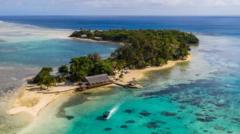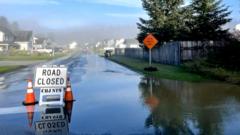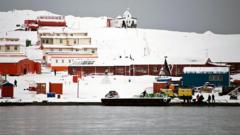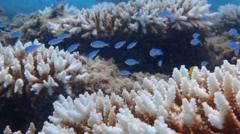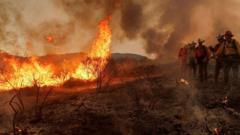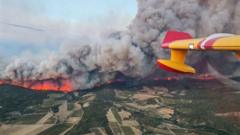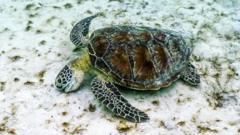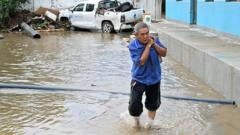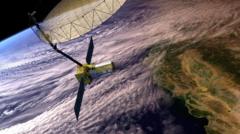Environmental experts and local authorities are closely monitoring A23a, a colossal iceberg that poses a significant threat to the fragile ecosystems of South Georgia. The iceberg, having calved from the Filchner Ice Shelf in Antarctica in 1986, is now just 173 miles away from the island territory, potentially signaling disaster for local wildlife.
Giant Iceberg Threatens South Georgia's Unique Wildlife Habitat

Giant Iceberg Threatens South Georgia's Unique Wildlife Habitat
A23a, the world's largest iceberg, is heading towards South Georgia, putting local penguins and seals at risk.
The iceberg, now measuring about 3,500 square kilometers, was recently spotted making a northward journey towards South Georgia, threatening to ground on its shores. This has raised alarms for conservationists, as giant icebergs have historically caused severe disruption to the region's wildlife, blocking feeding grounds for essential species such as penguins and seals. Past encounters have led to devastating consequences, with numerous birds and marine mammals succumbing due to restricted access to food resources.
South Georgia, a British territory revered for its rich biodiversity, is closely watched by a coalition of scientists, fishermen, and sailors who are keeping tabs on A23a's movements through satellite imagery. The iceberg's looming arrival could mirror events from 2004 when another iceberg, A38, similarly wreaked havoc on local wildlife populations, leading to substantial loss of life among penguin chicks and seal pups.
Experts emphasize the critical need for constant vigilance in navigating these new developments, as large chunks of ice from A23a are reported to be disintegrating and floating around the region. For fishermen operating in the area, maneuvering through such perilous waters has become a daily challenge, requiring heightened awareness and preparedness.
Although the birth of A23a predates the majority of climate change's impacts, its trajectory nonetheless underscores the alarming trends associated with climate change as Antarctica continues to destabilize. Some scientists are taking advantage of A23a's presence to explore its interactions with surrounding ecosystems, including its effects on the carbon cycle. Water samples collected near the iceberg could shed light on how melting ice impacts ocean conditions and carbon sequestration efforts.
As South Georgia braces for the impact of A23a, conservationists remain hopeful for the future resilience of the island's wildlife amid the challenges posed by climate change and its unpredictable icebergs.
In the face of such uncertainty, the voices of local scientists and naturalists echo a common sentiment: preserving the delicate balance of South Georgia's ecosystems will require collective efforts and innovative solutions as we navigate this changing world.
South Georgia, a British territory revered for its rich biodiversity, is closely watched by a coalition of scientists, fishermen, and sailors who are keeping tabs on A23a's movements through satellite imagery. The iceberg's looming arrival could mirror events from 2004 when another iceberg, A38, similarly wreaked havoc on local wildlife populations, leading to substantial loss of life among penguin chicks and seal pups.
Experts emphasize the critical need for constant vigilance in navigating these new developments, as large chunks of ice from A23a are reported to be disintegrating and floating around the region. For fishermen operating in the area, maneuvering through such perilous waters has become a daily challenge, requiring heightened awareness and preparedness.
Although the birth of A23a predates the majority of climate change's impacts, its trajectory nonetheless underscores the alarming trends associated with climate change as Antarctica continues to destabilize. Some scientists are taking advantage of A23a's presence to explore its interactions with surrounding ecosystems, including its effects on the carbon cycle. Water samples collected near the iceberg could shed light on how melting ice impacts ocean conditions and carbon sequestration efforts.
As South Georgia braces for the impact of A23a, conservationists remain hopeful for the future resilience of the island's wildlife amid the challenges posed by climate change and its unpredictable icebergs.
In the face of such uncertainty, the voices of local scientists and naturalists echo a common sentiment: preserving the delicate balance of South Georgia's ecosystems will require collective efforts and innovative solutions as we navigate this changing world.

